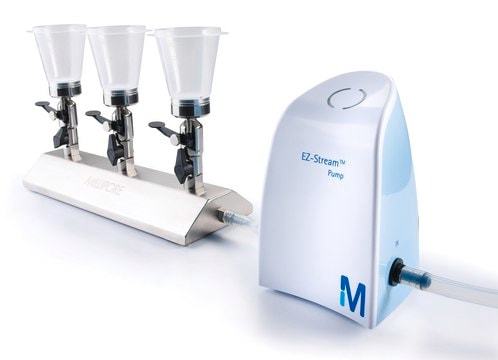Wichtige Dokumente
W331201
3-(Methylthio)-propylisothiocyanat
≥98%, FG
Synonym(e):
radish isothiocyanate
About This Item
Empfohlene Produkte
Biologische Quelle
synthetic
Qualitätsniveau
Qualität
FG
Halal
Kosher
Agentur
meets purity specifications of JECFA
Einhaltung gesetzlicher Vorschriften
EU Regulation 1334/2008 & 178/2002
Assay
≥98%
Brechungsindex
n20/D 1.564 (lit.)
bp
254 °C (lit.)
Dichte
1.102 g/mL at 25 °C (lit.)
Anwendung(en)
flavors and fragrances
Dokumentation
see Safety & Documentation for available documents
Nahrungsmittelallergen
no known allergens
Organoleptisch
pungent; vegetable; sulfurous
SMILES String
CSCCCN=C=S
InChI
1S/C5H9NS2/c1-8-4-2-3-6-5-7/h2-4H2,1H3
InChIKey
LDKSCZJUIURGMW-UHFFFAOYSA-N
Suchen Sie nach ähnlichen Produkten? Aufrufen Leitfaden zum Produktvergleich
Verwandte Kategorien
Anwendung
- Functional Chitosan-Based Composite Film Incorporated with 3-(Methylthio) Propyl Isothiocyanate/α-Cyclodextrin Inclusion Complex for Chicken Meat Preservation.: This study explores the development of a functional composite film based on chitosan and incorporating 3-(methylthio) propyl isothiocyanate within an α-cyclodextrin inclusion complex. The composite film demonstrates significant antimicrobial properties, making it highly effective for chicken meat preservation, thereby extending the shelf life and maintaining the quality of meat products (Wu et al., 2022).
Signalwort
Danger
Gefahreneinstufungen
Acute Tox. 3 Dermal - Acute Tox. 3 Inhalation - Acute Tox. 3 Oral - Aquatic Acute 1 - Aquatic Chronic 1 - Eye Irrit. 2 - Skin Irrit. 2 - STOT SE 3
Zielorgane
Respiratory system
Lagerklassenschlüssel
6.1C - Combustible acute toxic Cat.3 / toxic compounds or compounds which causing chronic effects
WGK
WGK 3
Flammpunkt (°F)
187.9 °F
Flammpunkt (°C)
86.6 °C
Hier finden Sie alle aktuellen Versionen:
Besitzen Sie dieses Produkt bereits?
In der Dokumentenbibliothek finden Sie die Dokumentation zu den Produkten, die Sie kürzlich erworben haben.
Unser Team von Wissenschaftlern verfügt über Erfahrung in allen Forschungsbereichen einschließlich Life Science, Materialwissenschaften, chemischer Synthese, Chromatographie, Analytik und vielen mehr..
Setzen Sie sich mit dem technischen Dienst in Verbindung.







